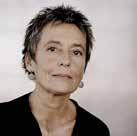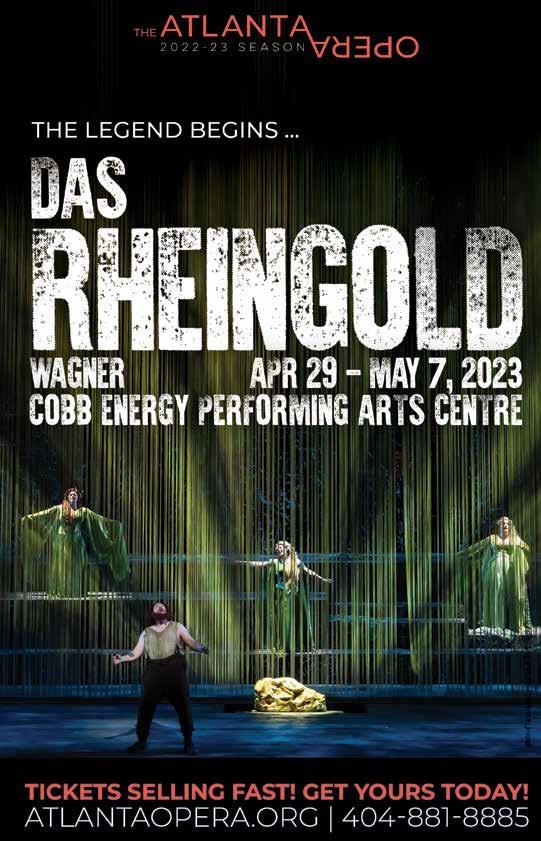ASO | SEASON SPONSORS

We are deeply grateful to the following leadership donors whose generous support has made the Atlanta Symphony Orchestra's season possible.

The Atlanta Symphony Orchestra gives special thanks to the following donors for their extraordinary support of the Orchestra’s Stability Fund.

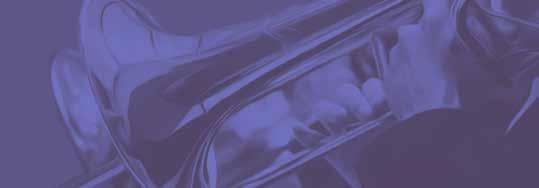
Created at the onset of the COVID-19 pandemic, the Stability Fund helps mitigate the enormous challenges of the pandemic and allows the Orchestra to continue performing and sharing music with our community.
A Friend of the Symphony (4)
Mr. Thomas Mark
Adkins
Mr. Alvaro Alonso & Ms. Cari Clark
Mr. Peter Bancheri & Ms. Maureen
McAndrews
Dr. Anne Bartolucci & Mr. Jason Graham
Drs. Jay & Martin
Beard-Coles
Alex Bolton
Ms. Jadonna Brewton
Dr. Rhonda L. Briscoe
Ms. Barbara L. Brown
Shannon Caldwell
Ms. Sophie Chan
Jenene Cherney
Mr. & Mrs. Briston
Chester
Tammy Clark
Paul Colangelo
Mr. Carl Colucci
Dr. Janie I. Cowan
Ms. Amy Cronin
Gray & Marge Crouse
Alexander Crozier
Mr. & Mrs. Deryck
Durston
Mr. & Mrs. Michael Faber
Mr. Brandon Goldberg
Mr. & Mrs. Richard Greensted
Ms. Joy Hambrick
Ms. Denise Hanusek & Ms. Ann-Marie Breaux
Ms. Linda L. Hare & Mr. Gerald A. Barth
Ms. Tamara L. Harper
Ms. Cheryl Heenan & Mr. Thomas Mullally
Ms. Patricia Herndon
Daniel E. Holloway
Ms. Jackie G. Howard
Ms. Joy Huddlestun
Ms. Margaret B.
Hungerford
Mr. Christopher Hurst
Mr. Brian C. Ingram
Mr. & Mrs. David L.
Jennings
Mr. & Mrs. Larry Kistner
Mr. Steven Lindsey
Mr. George Macon
Ms. Janell Martin
Jennifer Mathews
Ms. Elizabeth M.
Newton
Mr. & Mrs. Eric Norman
Lynn & Galen Oelkers
Mr. & Mrs. Paul J.
Owen, Jr.
Dr. William & Reverend
Katherine Pasch
Mrs. Gretchen
Pennybacker
Mr. & Mrs. Rich Piombino
Ms. Graciela Pregnolato
Katie Rattray
Jonathan Seletyn
Mr. Warren Shaw
Mr. Tom Slovak & Mr. Jeffery Jones
Mr. & Mrs. Bruce Strahan
Ms. Candice Thompson
Mr. & Mrs. Jonathan
Throop
Mr. & Mrs. William H. Townsend
Melanie Upshaw
Janice Wolf
Mr. & Mrs. Tom
Wroblewski
Samantha Young & Michael Pietrobon
Katelyn Zeeveld
Concerts of Thursday, March 30, 2023 8:00pm
Saturday, April 1, 2023 8:00pm
Sunday, April 2, 2023 3:00pm
JOHANN SEBASTIAN BACH (1675-1750)
Matthäus-Passion (St. Matthew Passion), BWV 244 (1727)
Part I
INTERMISSION 20 MINS
Part II
Approximate performance time is three hours.
NATHALIE STUTZMANN, conductor
ROBIN TRITSCHLER, tenor (Evangelist)
NMON FORD, baritone (Jesus)
CAMILLA TILLING, soprano
LUCIA BRADFORD, mezzo-soprano
Presented with support from
Performances of this concert were made possible by a grant from the BARNEY M. FRANKLIN & HUGH W. BURKE CHARITABLE FUND.
KEVIN TARVER, tenor
LEON KOŠAVIĆ, baritone
Michael Devine, baritone: Pilate *
William Borland, baritone: Peter *
Jameson Linville, baritone: Judas *
Trey Clegg, bass: High Priest *
Wanda Yang Temko, soprano: Maidservant *
Anne-Marie Spalinger, soprano: Pilate’s Wife *
Katherine Murray, alto: False Witness *
LaRue Bowman, tenor: False Witness *
THE ATLANTA SYMPHONY ORCHESTRA CHORUS
Norman Mackenzie, Director of Choruses
THE SPIVEY HALL CHILDREN’S CHOIR
Martha Shaw, Director
Annalisa Pappano, viola da gamba
Alice Coquart, continuo cello
Chloé Sévère, continuo keyboard
Peter Marshall, continuo keyboard
Jonas Nordberg, theorbo
Joseph McFadden, ASO Principal Bass
Anthony Georgeson, ASO Principal Bassoon
The use of cameras or recording devices during the concert is strictly prohibited. Please be kind to those around you and silence your mobile phone and other hand-held devices.
*Assisting Artists from the Atlanta Symphony Orchestra Chorus
20 aso.org | @AtlantaSymphony | facebook.com/AtlantaSymphony | mar31/apr1/2
The St. Matthew Passion is scored for soprano, alto, tenor, baritone and bass solos, double mixed chorus, children’s chorus, and double orchestra. Each orchestra comprises two flutes, two oboes (oboes da caccia and oboes d’amore), strings, organ and basso continuo.
by Noel Morris Program Annotator
First ASO performances: April 1–4, 1971
Robert Shaw, conductor
Most recent ASO performances: March 8–10, 2012
Robert Spano, conductor
"The St. Matthew Passion is a life-changing journey for any human, religious or not. It tells the story of humanity.”
Johann Sebastian Bach’s St. Matthew Passion is at once monumental and intimate, breathtaking and gut-wrenching. Running anywhere between two-and-a-half to three hours, this musical behemoth was originally integrated into a marathon church service—the Good Friday vespers. At its premiere in 1727, Part I portrayed the anointing in Bethany and ran through the Last Supper and Jesus’s arrest. At this point (more than an hour into Bach’s score), the pastor preached a robust sermon. Once the preacher stepped back from the pulpit, Bach conducted Part II, which covered Christ’s trial, crucifixion, and burial.
The Composer
By the time Johann Sebastian was born, central Germany was dotted with church musicians named Bach. A marvel of genetics, the Bach family trained male children for the trade from an early age, typically with older brothers, uncles, fathers, and cousins serving as instructors. Johann Sebastian trained six future musicians named Bach, in addition to his numerous children. In that family, “Sebastian” was a fifth-generation church musician. In preparation, he studied the Bible in German and Latin. At 10, he was orphaned and went to live with his older brother Johann Christoph—already a successful organist. Sebastian thrived in his brother’s care and won his first church job in Arnstadt at the age of 18.
J.S. Bach in Leipzig
In his capacity as Thomaskantor (Cantor of Thomaskirche), Bach had been the third-choice candidate for the job. Although he was a Bible whiz and superlative musician, his lack of university education diminished his standing. The cantor’s responsibilities were vast and varied: he served as organist, choirmaster and resident composer to four Leipzig churches. He taught private music lessons and was responsible for the schooling of his choir, which was made up of

21
notesontheprogram |
—Nathalie Stutzmann
students from the St. Thomas School. To compensate for his lack of academic credentials, Bach agreed to pay an instructor from his own salary. This is not to say he was unlearned.
When Bach moved his family to Leipzig in 1723, he made up his mind to provide a new cantata every Sunday, thus creating a musical sermon for each week of the lectionary. (The lectionary is a schedule of Bible readings that corresponds with the church calendar.) This was a near-superhuman undertaking, setting the stage for his musical essays on the longest and most dramatic reading—the Passion of Christ. According to his obituary, Bach wrote five Passions; only two survived, plus the libretto of a third. Within the Bach family, the St. Matthew Passion was known as “the Great Passion,” as it was his grandest and most ambitious. Toward the end of his life, as his eyesight dimmed, Bach carefully recopied the piece, no doubt with his legacy in mind.
Construction
The Passion of our Lord Jesus Christ According to the Evangelist Matthew contains a complete reading of the Passion of Christ, as told in chapters 26 and 27. In addition to the Gospel reading, there are meditations, mostly poems written by librettist Christian Friedrich Henrici (a.k.a. Picander). The work is based on Martin Luther’s German-language translation of Matthew’s Gospel. It’s scored for a group of soloists and two choirs, each with its own orchestra. A third choir provides commentary and is sometimes called the “boys’ choir” because it was written for treble voices only. This is a reference to the fact that in Leipzig, Bach’s soprano section was made up of schoolboys.
In the St. Matthew Passion, the Bible readings are written as recitatives, a pared-down musical style that follows the rhythm of human speech. Typical to operas and oratorios, “recits” convey information and advance the plot, while arias and choruses express feelings. In this case, the arias and choruses offer meditations, preaching and commentary.
In the Matthew Passion recits, the tenor or “Evangelist” serves as the narrator. The bass sings the role of Jesus. Notice when Jesus sings, Bach bathes his voice in a shimmering “halo” produced by sustained chords in the violins and violas. (In a masterstroke of symbolism, the halo ceases at the moment Jesus cries out: “Eli, Eli, lama asabthani?” (My God, my God, why hast thou forsaken me?). Other roles include the voices of Peter, Pilate, Pilate’s wife, two women and High Priests. The
| encore 22 aso.org | @AtlantaSymphony | facebook.com/AtlantaSymphony

two choirs fill in the rest, serving as various participants in the drama. The opening chorus, for example, summarizes the entire Passion. Notice the antiphonal effect between the two choirs, who represent Christ’s contemporaries and the Faithful (ourselves). Choir I sings “Behold!” Choir II answers, “Whom?” Choir I replies: “The Bridegroom. See him!” From the outset, we encounter humanity in its fallen state, with the choruses tossing back and forth their expressions of guilt, confusion and despair. At the same time, Choir III soars above them in a slow chorale tune: “O innocent Lamb of God, slaughtered upon the tree of the cross, at all times found patient . . . Thou hast borne all sin . . . Have mercy on us, O Jesus!”
Symbolism
One of the most stunning aspects of Bach’s St. Matthew Passion grows out of the composer’s deep and abiding faith. Many consider J. S. Bach to be among the greatest musical minds of western music; putting that brainpower behind his mastery of the Bible gives voice to some of the most enduring mysteries of the Judeo-Christian tradition. During the Last Supper, for example, Jesus tells his twelve disciples, “One of you shall betray me,” setting off a panicked flurry of voices who cry out, “Lord, is it I?”
Though this moment lasts only five bars, it is designated as a separate chorus. It passes in the blink of an eye, rendering it practically impossible to count the number of voices that cry out, “Lord, is it I?” But the answer is eleven. The twelfth disciple—Judas, the betrayer—remains silent.
In another example, the apostle Peter lingers outside the palace after Jesus’ trial. When bystanders question him, he denies knowing Jesus three times. Immediately, a cock crows—just as the Lord has prophesied. Peter begins to weep, setting up one of Bach’s most exquisite arias, “Erbarme dich.” The alto sings of Peter’s tears over pulsing eighth notes in the continuo—an effect evoking the falling of teardrops.
In the end, Jesus breathes his last; the veil of the temple splits in two, and the stage is set for transformation—the Resurrection. Bach hints at the miracle to come when the bass strikes a more hopeful tone, singing, “For he shall henceforth evermore . . . sweetly take his rest in me. World, go hence [from my heart], let Jesus in!”
| encore 24 aso.org | @AtlantaSymphony | facebook.com/AtlantaSymphony
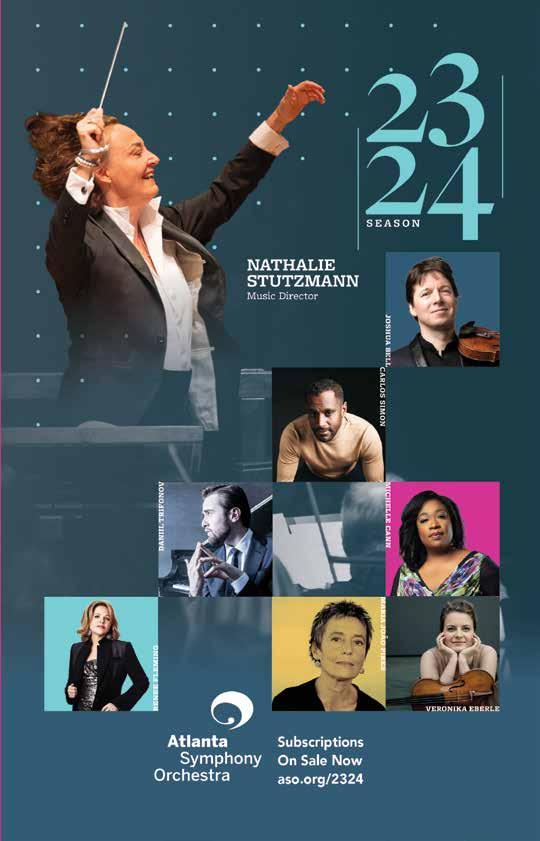
CAMILLA TILLING, SOPRANO
wedish-native Camilla Tilling has been performing on the world’s leading opera, concert and recital stages for over two decades. In the 2022/23 season, Tilling has a varied schedule across Europe and North America including the premiere of Daniel Nelson’s Chaplin Songs with the Swedish Radio Symphony Orchestra and Andrew Manze, Bill Barclay’s semi-staging of Grieg’s Peer Gynt with Cincinnati Symphony under Louis Langrée and a program featuring Irgen-Jensens’ Japanischer Frühling alongside Mahler’s Symphony No.4 with Christian Blex and the Karajan-Akademie of Berliner Philharmoniker.
She joins Gianandrea Noseda and Washington’s National Symphony Orchestra at the Kennedy Centre for Beethoven Symphony No. 9 and David Danzmayr and Oregon Symphony Orchestra for Osvaldo Golijov’s Three Songs


Highlights of recent seasons include Mahler Symphony No.4 under Gustavo Dudamel with both Het Concertgebouw Orkest and Los Angeles Philharmonic.
LUCIA BRADFORD, MEZZO-SOPRANO
Mezzo-soprano Lucia Bradford has performed a number of operatic roles including Carmen in Bizet’s Carmen, Zita in Puccini’s Gianni Schicchi, La Principessa in Puccini’s Suor Angelica, The Mother in Ravel’s L’Enfant des Sortileges, Mrs. Quickly in Verdi’s Falstaff, Hippolyta in Britten’s A Midsummer Night’s Dream, Mary Watkins’ Emmett Till as Mamie Till and Maria in Gershwin’s Porgy and Bess, among many others.
Bradford’s concert repertory includes Mozart’s Vesperae solennes de Confessore, Hadyn’s Lord Nelson Mass, De Falla’s El amor Brujo, William Grant Still’s And they lynched him, Nathanial Dett’s The Ordering of Moses, Julia Perry’s Stabat Mater, Handel’s Messiah, Mozart Requiem, Bach B minor Mass and St. John Passion
Upcoming events include Handel’s Messiah with National Symphony, Bach Magnificat with the Oratorio Society of New York, Porgy and Bess at Opera Carolina, and Bach’s B minor Mass at Carnegie Hall with Oratorio Society of New York, and a debut with the Atlanta Symphony with Bach’s Saint Matthew Passion.
26 | meettheartists aso.org | @AtlantaSymphony | facebook.com/AtlantaSymphony
CARIN EKBLOM
KENNETH TARVER, TENOR
Kenneth Tarver has appeared at the most prestigious opera houses and concert halls around the world, performing both well-known and seldom-performed works with conductors such as René Jacobs, Riccardo Chailly, Pierre Boulez, and Claudio Abbado. Recent performances include Berlioz’s Requiem and Beethoven’s Symphony No. 9 with the Seattle Symphony and Ludovic Morlot, Donizetti’s Don Pasquale at the Bolshoi in Moscow, Aufidio in Mozart’s Lucio Silla at Teatro Real Madrid with Ivor Bolton, Rossini’s Eduardo e Cristina, L’Occasione fa il ladro and Sigismondo at Rossini in Wildbad conducted by Antonino Fogliani, Mozart’s Die Zauberflöte at Opera Vlaanderen.
Tarver is a past winner of the Metropolitan Opera National Council Auditions and was a member of the Metropolitan Opera’s Young Artist Development Program and the Staatsoper Stuttgart. A graduate of Interlochen Arts Academy, The Oberlin College Conservatory of Music, Kenneth holds a Masters of Music Performance from Yale University School of Music, where he received the Dean’s Award for the Most Outstanding Student in the graduating class.

LEON KOŠAVIĆ, BASS
Croatian baritone Leon Košavić began his vocal training at the age of 12. He completed his master’s degree at the Music Academy in Zagreb in the singing class of Giorgio Surian. He is a member of the Queen Elisabeth Music Chapel program under the direction of José van Dam.
In 2011 he began his musical career as Papageno at the Croatian National Opera. He made his debut at the Finnish National Opera as Malatesta (Don Pasquale) in 2015, and also won the Croatian Theatre Prize for “Outstanding performances by young artists under 30” for his sensational performance of Don Giovanni Since then he has appeared at numerous European opera houses such as the Royal Opera House London (Ping in Turandot), Stuttgart State Opera (Don Giovanni), Liège (Figaro in Le Nozze di Figaro), Antwerp (La Juive), Lausanne (Masetto in Don Giovanni) and Strasbourg (Figaro in Barbiere di Siviglia).

encoreatlanta.com | 27
JOAN TOMÀS
NMON FORD, JESUS
anamanian-American baritone Nmon Ford’s recent highlights include his exceptionally reviewed performances as Don Giovanni at Dorset Festival Opera in the UK, and as Crown in the new Metropolitan Opera production of Porgy and Bess in which he appeared at London’s English National Opera and at Dutch National Opera in The Netherlands. In Denver, he joined Opera Colorado’s Carmen as Escamillo, a role he also sang at Calgary Opera in Canada and in London at ENO. Recent career highlights include Jochanaan in Salome with Patricia Racette at Pittsburgh Opera, Don Pizzaro in Fidelio with Christine Goerke at Cincinnati Opera, and in concert with Atlanta Symphony Iago in Otello with Russell Thomas in the title role. Earlier in his career Mr Ford sang often at Hamburg State Opera in Germany and appeared as Scarpia in Tosca, Luna in Il Trovatore, title role in Billy Budd, The Traveler in Death in Venice, and Thoas in Iphigenie et Tauride under the baton of Simone Young; future engagements include Sharpless in Madama Butterfly at Detroit Opera.
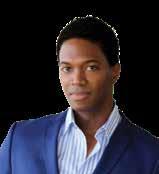
ROBIN TRITSCHLER, EVANGELIST
Irish tenor Robin Tritschler graduated from the Royal Academy of Music and was a BBC New Generation Artist.

Highlights for 22/23 see Robin join Nathalie Stutzmann and the Atlanta Symphony Orchestra to open their season with performances of Beethoven’s Symphony No. 9. He returns later in the season as the Evangelist in performances of Bach’s St Matthew Passion. He will also sing Ferrando in the Irish National Opera’s production of Così fan tutte
In concert, Robin has appeared with many leading orchestras including the London Philharmonic Orchestra (Yannick NézetSéguin, Nathalie Stutzmann and Vladimir Jurowski), L’Orchestre National de Lyon (Yutaka Sado), Gulbenkian Foundation Lisbon, the Hong Kong Philharmonic Orchestra (Edo de Waart), and the BBC Philharmonic (Juanjo Mena). With the RTE Concert Orchestra, Robin performed the Messiah before Pope Benedict XVI to celebrate the 80th Anniversary of the Vatican State and gave the UK premiere of CPE Bach’s St John Passion with the Bournemouth Symphony Orchestra under Kirill Karabits.
| encore 28 aso.org | @AtlantaSymphony | facebook.com/AtlantaSymphony
GARRETH WONG
ANNALISA PAPPANO, VIOLA DA GAMBA

Annalisa Pappano is the founder and artistic director of the early music ensemble Catacoustic Consort, and led the group to win the grand prize in the Naxos/Early Music America Live Recording Competition. Her wide range of instruments includes the viola da gamba (treble, tenor, bass), pardessus de viole, and lirone.
She was on faculty at the University of Cincinnati CollegeConservatory of Music—teaching viola da gamba and historically informed performance practice —until moving to Germany in 2019, where she is expanding her performance career while continuing appearances in the USA. She was a featured soloist on Austrian State Television ORF3 in the J.S. Bach St. Matthew Passion (Thomas Guggeis, conductor).
Pappano has performed throughout Belgium, England, Ireland, Colombia, Canada, Germany, Austria, Switzerland, and the U.S. She is a member of Wildcat Viols, Trio Pardessus, and Atalante, and with Atalante won a Diapason d’Or and Gramophone Award.
JONAS NORDBERG, THEORBO

Jonas Nordberg is a lutenist mastering a wide range of plucked instruments from the 16th to 19th centuries. A graduate of the Mozarteum University Salzburg and the Royal College of Music Stockholm, he has an active schedule in more than 25 countries, performing solo concerts, chamber music, staged performances and large ensemble work.
He performs with ensembles such as Concerto Köln, Orchestra of the Age of Enlightenment, Concerto Copenhagen, Orfeo 55, Drottningholm Baroque Ensemble, London Handel Orchestra, Akademie für Alte Musik Berlin, Insula Orchestra, Aurora Orchestra, Camerata Øresund, Mozarteum Orchester Salzburg, Gothenburg Symphony Orchestra, and Gävle Symphony Orchestra amongst several other period instrument chamber groups.
He works extensively with Swedish chamber ensemble Operabyrån, co-creating chamber operas and semi-staged performances featuring forgotten female composers.
encoreatlanta.com | 29
TINA GUITERREZ
CHLOÉ SÉVÈRE, CONTINUO KEYBOARD
Chloé Sévère is the co-founder and director of Ensemble El Sol and has cultivated that group’s unusual specialty of Spanish and South American Baroque music. She has also been active as an educator, harpsichordist, and keyboard accompanist.
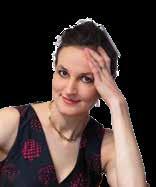
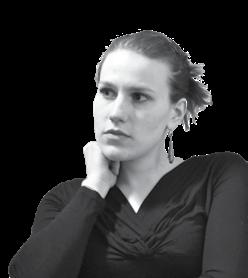
Sévère began studying the harpsichord at the Conservatoire à rayonnement départemental de la Vallée de Chevreuse with Michèle Dévérité. She graduated with honors and went on to the Amsterdam Conservatory for a harpsichord bachelor’s degree studying with Bob van Asperen, and returned to France for a master’s degree at the Paris Conservatory, working with Olivier Baumont. Sévère took lessons in chamber music with Kenneth Weiss and continuo playing with Blandine Rannou.
Sévère emerged as the winner of the Young Talent prize at a competition sponsored by Zonta International, after which she gained prestigious new collaborators: Nathalie Stutzmann, Les Arts Florissants, and Versailles Baroque Music Center, where she has made recurring appearances.
ALICE COQUART, CONTINUO CELLO
Alice Coquart studied cello at the Conservatoire à Rayonnement Régional (CRR) in Reims under Marc-Didier Thirault, where she obtained in 2005 the DEM in modern cello, then at the CRR in Paris in the class of Dominique de Williencourt. She holds the State Diploma of Teaching, modern cello discipline. She began playing baroque cello with Pauline Warnier and also obtained the DEM in baroque cello. She then studied with David Simpson at the CRR in Paris, then entered the Conservatoire National Supérieur de Musique (CNSM) in Paris under Christophe Coin and Bruno Cocset.
Coquart was selected to participate in the sessions of the French Youth Baroque Orchestra in 2006 and 2008, under the direction of Christophe Rousset and Paul Agnew. She also participated in Mozart’s Don Giovanni and Handel’s Jephtha productions with the Fuoco Opera Orchestra in 2008 and 2009, conducted by David Stern, as well as Handel’s Messiah with the Mattheus Ensemble in March 2009, conducted by Jean-Christophe Spinosi. In the fall of 2009, she played Handel’s Susanna in the Orchestre des Arts Florissants, conducted by William Christie. She played in Orlando Furioso in 2011, under the direction of Jean-Christophe Spinosi at the Théâtre des Champs Elysées.
| encore 30 aso.org | @AtlantaSymphony | facebook.com/AtlantaSymphony
EDOUARD BRANE
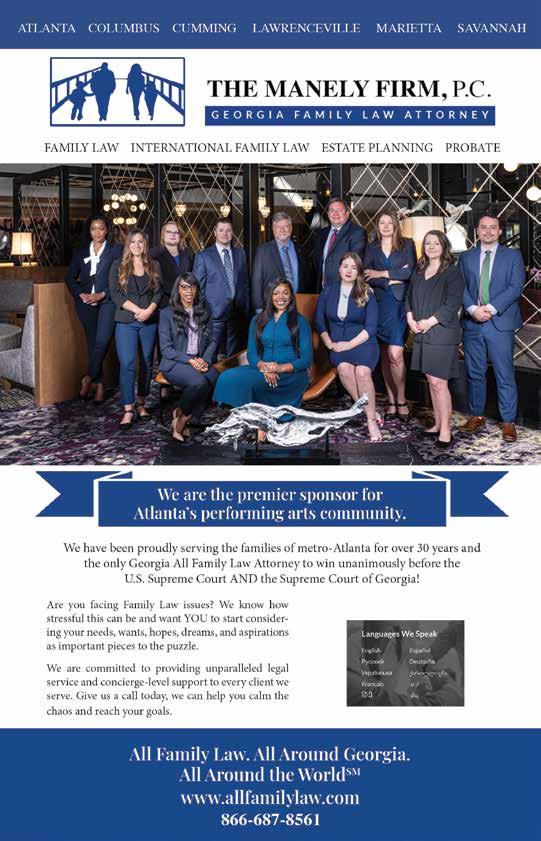
ATLANTA SYMPHONY ORCHESTRA CHORUS
The Atlanta Symphony Orchestra Chorus, founded in 1970 by former Music Director, Robert Shaw, is an all-volunteer, auditioned ensemble that performs on a regular basis with the Orchestra and is featured on many of its recordings. Led by Director of Choruses, Norman Mackenzie, the chorus is known for its precision and expressive singing quality. Its recordings have garnered 14 Grammy® Awards (nine for Best Choral Performance; four for Best Classical Recording and one for Best Opera Recording). The Chorus performs large symphonic choral works, under the direction of Co-Artistic Advisors Maestro Robert Spano and Principal Guest Conductor Sir Donald Runnicles, and Music Director Designate Nathalie Stutzmann. In addition, the Chorus has been involved in the creation and shaping of numerous world-premiere commissioned works.
NORMAN MACKENZIE, DIRECTOR OF CHORUSES
Norman Mackenzie’s abilities as musical collaborator, conductor and concert organist have brought him international recognition. As Director of Chorus for the Atlanta Symphony Orchestra (ASO) since 2000, he was chosen to help carry forward the creative vision of legendary founding conductor Robert Shaw.

During his tenure, the Chorus has made numerous tours and garnered several Grammy® awards, including Best Classical Album and Best Choral Performance.
At the ASO, he prepares the Choruses for all concerts and recordings, works closely with Nathalie Stutzmann on the commissioning and realization of new choral-orchestral works and conducts holiday concerts. In his 14-year association with Mr. Shaw, he was keyboardist for the ASO, principal accompanist for the ASO Choruses and ultimately assistant choral conductor. In addition, he was musical assistant and accompanist for the Robert Shaw Chamber Singers, the Robert Shaw Institute Summer Choral Festivals in France and the United States and the famed Shaw/ Carnegie Hall Choral Workshops.
He prepared the ASO Chorus for its acclaimed 2003 debut and successive 2008 and 2009 performances in Berlin with the Berlin Philharmonic, in Britten’s War Requiem, Berlioz’s Grande Messe des Morts and Brahms’ Ein deutsches Requiem, respectively, conducted by ASO Principal Guest Conductor Donald Runnicles.
| encore 32
aso.org | @AtlantaSymphony | facebook.com/AtlantaSymphony
JD SCOTT
ATLANTA SYMPHONY ORCHESTRA CHORUS
Norman Mackenzie director of choruses
The Frannie & Bill Graves Chair
SOPRANO 1
Khadijah Davis
Liz Dean*
Laura Foster
Michelle Griffin*
Erin Jones*
Arietha Lockhart**
Alexis Lundy
Mindy Margolis*
Joneen Padgett*
Susan Ray
Lydia Sharp
Susie Shepardson
Chelsea Toledo
Brianne Turgeon**
Deanna Walton
Erika Wuerzner
Wanda Yang Temko**
SOPRANO 2
Sloan Atwood*
Jessica Barber
Tierney Breedlove
Barbara Brown
Mary Goodwin
Amanda Hoffman
Heidi Padovano
Marianna Schuck
Anne-Marie Spalinger*
Cheryl Thrash**
Jeffrey Baxter choral administrator The Florence Kopleff Chair
ALTO 1
Pamela Amy-Cupp
Emily Campbell
Donna Carter-Wood**
Patricia DinkinsMatthews*
Unita Harris
Janet Johnson**
Kathleen KellyGeorge*
Virginia Little*
Alina Luke
Linda Morgan**
Katherine Murray**
Natalie Pierce
Kathleen Poe Ross
Camilla Springfield**
Rachel Stewart**
ALTO 2
Angelica BlackmanKeim
Elizabeth Borland
Emily Boyer
Marcia Chandler*
Carol Comstock
Meaghan Curry
Alyssa Harris
Joia Johnson
Katherine MacKenzie
Laura Rappold*
Sharon Simons*
Virginia Thompson*
Kiki Wilson**
Diane Woodard**
TENOR 1
Jeffrey Baxter**
Christian Bigliani
David Blalock**
LaRue Bowman
Jack Caldwell**
Daniel Compton
Justin Cornelius
Clifford Edge**
Steven Farrow**
Peter Marshall accompanist
BASS 1
Dock Anderson
William Borland*
Russell Cason**
Jeremy Christensen
Trey Clegg*
Rick Cobb
Michael Cranford
Michael Devine
Jon Gunnemann**
Leif Gilbert-Hansen*
Keith Langston*
Christopher Patton*
Mark Warden*
TENOR 2
Matthew Borkowski
Steve Brailsford
Phillip Crumbly*
Steven Dykes
Joseph Few**
John Harr
David Kinrade
Michael Parker
Timothy Parrott
Brent Runnels
Scott Stephens**
Wesley Stoner
Jason Hamlet
Alp Koksal
Jameson Linville
Peter MacKenzie
Jason Maynard
Jackson McCarthy
John Newsome
John Terry
Edgie Wallace*
BASS 2
Philip Barreca
Marcel Benoit
Joel Craft**
Timothy Gunter*
Philip Jones
George Sustman
Benjamin Temko*
* 20+ years of service
** 30+ years of service
# Charter member (1970)
encoreatlanta.com | 33
Concerts of Thursday, April 13, 2023
8:00 PM
Saturday, April 15, 2023
8:00 PM
STÉPHANE DENÈVE, conductor
AUGUSTIN HADELICH, violin
CARLOS SIMON (b. 1986)
Fate Now Conquers (2020) 5 MINS
BENJAMIN BRITTEN (1913–1976)
Violin Concerto, Op. 15 (1939) 33 MINS
I. Moderato con moto (attacca)
II. Vivace (attacca)
III. Passacaglia: Andante lento — Con moto
Augustin Hadelich, violin
INTERMISSION 20 MINS
HECTOR BERLIOZ (1803–1869)
Symphonie fantastique, Op. 14 (1830) 52 MINS
I. Rêveries — Passions
II. Un bal (A Ball)
III. Scène aux champs (In the Meadows)
IV. Marche au supplice (March to the Scaffold) [attacca]
V. Songe d’une Nuit du Sabbat (Sabbath Night’s Dream)
The use of cameras or recording devices during the concert is strictly prohibited. Please be kind to those around you and silence your mobile phone and other hand-held devices.
34 | apr13/15
by Noel Morris Program Annotator
Fate Now Conquers
Fate Now Conquers is scored for piccolo, flute, two oboes, two clarinets, two bassoons, two horns, two trumpets, timpani and strings.
Carlos Simon is a native of Atlanta, Georgia, whose music ranges from concert music for large and small ensembles to film scores with influences of jazz, gospel and neo-romanticism. Simon is the Composer-in-Residence for the John F. Kennedy Center for the Performing Arts and was nominated for a 2023 Grammy® award for his latest album, Requiem for the Enslaved. Simon earned his doctorate degree at the University of Michigan, where he studied with Michael Daugherty and Evan Chambers. He has also received degrees from Georgia State University and Morehouse College. He is an honorary member of Phi Mu Alpha Music Sinfonia Fraternity and a member of the National Association of Negro Musicians, Society of Composers International, and Pi Kappa Lambda Music Honor Society. He has served as a member of the music faculty at Spelman College and Morehouse College in Atlanta, Georgia, and now serves as Assistant Professor at Georgetown University. Simon was also a recipient of the 2021 Sphinx Medal of Excellence, the highest honor bestowed by the Sphinx Organization to recognize extraordinary classical Black and Latinx musicians, and was named a Sundance/Time Warner Composer Fellow for his work for film and moving image.
From the composer:
Using the beautifully fluid harmonic structure of the 2nd movement of Beethoven’s 7th Symphony, I have composed musical gestures that are representative of the unpredictable ways of fate. Jolting stabs, coupled with an agitated groove with every persona. Frenzied arpeggios in the strings that morph into an ambiguous cloud of free-flowing running passages depict the uncertainty of life that hovers over us.
We know that Beethoven strived to overcome many obstacles in his life and documented his aspirations to prevail, despite his ailments. Whatever the specific reason for including this particularly profound passage from the Iliad, in the end, it seems that Beethoven relinquished to fate. Fate now conquers.
Violin Concerto, Op. 15
In addition to the solo violin, this concerto is scored for three flutes (two doubling piccolo), two oboes (one doubling English horn), two clarinets, two bassoons, four horns, three trumpets, three trombones, tuba, timpani, percussion, harp and strings.
These are the first ASO performances.

35
notesontheprogram |
TERRANCE RAGLAND
First and most recent ASO performances:
January 19–22, 2012
Donald Runnicles, conductor
James Ehnes, violin
Leonard Bernstein described Benjamin Britten as “a man at odds with the world.”

“It’s strange,” said Bernstein, “because on the surface his music is decorative, positive, charming, [but] it’s so much more than that. When you hear his music, really hear it, not just listen to it, you become aware of something very dark, gears that are grinding and not quite meshing. And they make a great pain. His was a lonely time.”
As a lifelong pacifist, Benjamin Britten faced enormous friction— especially during the years around World War II. His response was to write some of music’s most affecting and potent prayers for peace, including the Sinfonia da Requiem (1940) and the War Requiem (1962). In 1936, as a twenty-something, he traveled to Barcelona to attend the International Society of Contemporary Music Festival, where he sat at the piano and performed his Op. 6 with violinist Antonio Brosa. While he was there, he heard the premiere of a violin concerto by Alban Berg, who had just died from a bee sting. Ironically, Berg’s Concerto was a piece inspired by the tragic death of a young woman. Now there was a double tragedy, and the elegiac nature of the Berg Violin Concerto lingered over that first audience like a dark cloud.
“It certainly is a very great work,” wrote Britten. “. . . At the end I feel pretty wet with anger about losing a genius like this.” The experience— this idea of a concerto as a lament—stuck with the 22-year-old Britten and percolated in his mind. In November of 1938, he began work on an elegiac violin concerto of his own.
By then, conditions in Europe were grave: the Spanish Civil War was a bloodbath; fascism was entering the mainstream, and Adolph Hitler had annexed Austria. Privately, Britten’s own entanglements were causing some grief. When tenor Peter Pears planned a North American tour, Britten decided to tag along. Together they sailed to Quebec in April of 1939. Spending three weeks in a cabin in the Laurentian Mountains, Britten worked on his Violin Concerto. Next, they visited a friend in Grand Rapids, Michigan, where Britten finished the Concerto. (He and Pears also became lovers there and would remain lifelong partners.)
Clearly, the 26-year-old Britten had star power in the U.S.; Sir John Barbirolli conducted the world premiere with the New York Philharmonic and Spanish violinist Antonio Brosa, the same friend who had shared the stage with the composer in Barcelona.
By that time, World War II had come to England. Britten could not
| encore 36 aso.org | @AtlantaSymphony | facebook.com/AtlantaSymphony
DENIS DE MARNEY
shake the feeling that his place was with his country. In March of 1942, he and Peter Pears boarded a Swedish cargo ship and crossed the Atlantic to face the prospect of conscription or imprisonment. Back in the U.K., both men were granted status as conscientious objectors.
The Britten Violin Concerto is among the most difficult in the repertoire. According to soloist Augustin Hadelich, who spoke with the New World Symphony’s Katherine Kobylarz, young Britten was perhaps “over-enthusiastic about using every possible extended violin technique.” The work includes double-stop runs, wide intervals, double-stop artificial harmonics, plucking the strings with the left hand—while holding a note—and more.
“It’s the level of difficulty that can otherwise be found only in some works of Paganini and is a bit daunting at first,” Hadelich said. “I feel though that the technical difficulty is always in the service of the music, not for its own sake—sometimes the strain of the performer is actually the point; if the piece was too easy, it would not communicate the struggle and anguish that Britten was going for.”
The Britten Violin Concerto is a heavy piece intended as a lament for the Spanish Civil War.
Britten the Pacifist
When Benjamin Britten was just three months old, he contracted pneumonia and nearly died. Upon recovery, he was left forever in a weakened state and struggled with health issues his entire life. Likely, he would have been deemed medically unfit for active duty during the fighting in WWII. But he felt so strongly about his pacifism, he registered as a conscientious objector and faced a tribunal in May of 1942.
“Since I believe that there is in every man the spirit of God,” he said, “I cannot destroy, and feel it my duty to avoid helping to destroy as far as I am able, human life, however strongly I may disapprove of the individual’s actions or thoughts.” Although he faced fierce criticism as a “cad and a coward,” he was granted dispensation on the basis that his work as a composer was itself a valuable and unique contribution to his country.
In October of 1965, the United Nations Secretary-General invited Britten to compose a work celebrating the 20th anniversary of U.N. Day. The work Voices for Today received its world premiere in the U.N. General Assembly Hall in New York and was simultaneously given performances in Paris and London.
encoreatlanta.com | 37
First ASO performance: February 12–13, 1958
Henry Sopkin, conductor
Most recent ASO performances: January 24–26, 2019
Robert Spano, conductor
Symphonie fantastique, Op. 14
Symphonie fantastique is scored for two flutes (one doubling piccolo), two oboes (one doubling English horn), two clarients (one doubling e-flat clarinet), four bassoons, four horns, two trumpets, two coronets, three trombones, two tubas, timpani, percussion, two harps and strings.
Obsessive love. It’s an appealing topic for romance novels and twisted TV shows. It’s unsettling when it happens in real life.
Hector Berlioz had seen an actress on stage and fallen head over heels. He pursued her. And out of that episode came the most unlikely series of events—and one of the greatest first symphonies ever written.
Young Berlioz played flute and guitar and dabbled in composition. In 1821, at 17, he arrived in Paris to study medicine but promptly found his way into the library of the Paris Conservatoire. That became his hangout, where he pored over books and scores and, one can imagine, stole envious glances at the music students. He attended concerts and operas but kept up the medical-student façade for his parents’ benefit until 1824. In 1826, he formally enrolled at the Conservatoire. A year later, he fell in love.
“I come now to the supreme drama of my life,” he wrote. “An English company had come over to Paris to give a season of Shakespeare at the Odeon. I was at the first night of Hamlet. In the role of Ophelia I saw Harriet Smithson. The impression made on my heart and mind by her extraordinary talent, nay, her dramatic genius, was equaled only by the havoc wrought in me by the poet she so nobly interpreted. That is all I can say.” In fact, it wasn’t all he could say. Over the coming months, he wrote her letters. He sent flowers. He even rented an apartment close to hers in order to orchestrate chance encounters. Harriet Smithson ignored him. After she left Paris, he remained under her spell.
“I am indeed wretched — inexpressibly!,” he wrote to a friend. “Today it is a year since I saw HER for the last time… Unhappy woman, how I loved you! I shudder as I write it – how I love you!”
Only later would we learn that his thoughts of Harriet Smithson became mingled with a melody. In Symphonie fantastique, that melody, called an idée fixe, follows his various moods and experiences associated with this obsessive love. In the Symphonie, it first appears in the flute and violins after a weeping introduction. Pairs of eighth notes in the lower strings convey his agitation.
| encore 38 aso.org | @AtlantaSymphony | facebook.com/AtlantaSymphony
In the composer’s words:
Part one: Daydreams, passions
The author imagines that a young musician… sees for the first time a woman… and falls desperately in love with her. By a strange anomaly, the beloved image never presents itself to the artist’s mind without being associated with a musical idea, in which he recognizes a certain quality of passion, but endowed with the nobility and shyness which he credits to the object of his love.

This melodic image and its model keep haunting him ceaselessly… This explains the constant recurrence in all the movements of the symphony of the melody… The transitions from this state of dreamy melancholy, interrupted by occasional upsurges of aimless joy, to delirious passion, with its outbursts of fury and jealousy, its returns of tenderness, its tears, its religious consolations — all this forms the subject of the first movement.
Part two: A ball
The artist finds himself in the most diverse situations in life… everywhere, whether in town or in the countryside, the beloved image keeps haunting him and throws his spirit into confusion.
Part three: Scene in the countryside
One evening in the countryside he hears two shepherds in the distance dialoguing with their ‘ranz des vaches’; this pastoral duet, the setting, the gentle rustling of the trees in the wind, some causes for hope… all conspire to restore to his heart… But what if she betrayed him!… This mingled hope and fear… form the subject of the adagio. Distant sound of thunder… solitude… silence…
Part four: March to the scaffold
Convinced that his love is spurned, the artist poisons himself with opium. The dose of narcotic, while too weak to cause his death, plunges him into a heavy sleep… He dreams that he has killed his beloved, that he is condemned, led to the scaffold and is witnessing his own execution. The procession advances to the sound of a march… in which a dull sound of heavy footsteps follows without transition the loudest outbursts. At the end of the march, the first four bars of the idée fixe reappear like a final thought of love interrupted by the fatal blow. [It’s worth noting that Symphonie fantastique was written thirty-six years after Robespierre’s Reign of Terror. Notice the celebratory mood; this coincides with the spirit of the crowd (not the condemned). Knowing that the Reign lived in the memory of his audience, Berlioz
encoreatlanta.com | 39 PIERRE
PETIT
conjures the crash of the guillotine, the head plopping into the basket, and a hearty cheer from the blood-thirsty onlookers.]
Part five: Dream of a witches’ sabbath
He sees himself at a witches’ sabbath, in the midst of a hideous gathering of shades, sorcerers and monsters of every kind who have come together for his funeral. Strange sounds, groans, outbursts of laughter; distant shouts which seem to be answered by more shouts. The beloved melody appears once more, but has now lost its noble and shy character; it is now no more than a vulgar dance tune, trivial and grotesque: it is she who is coming to the sabbath… Roar of delight at her arrival… She joins the diabolical orgy… The funeral knell tolls, burlesque parody of the Dies irae…
[Dies irae, Day of Wrath, is a plainchant from the Roman Catholic Mass for the Dead.]
Epilogue
In 1830, Berlioz won the Prix de Rome, a prestigious composition award. Months later, he successfully presented his Symphonie fantastique, establishing himself as a major talent. He revised the Symphonie and reissued it in 1832 with the beau monde of Paris in attendance, including Victor Hugo, Frédéric Chopin, Franz Liszt, Georges Sand and Niccolò Paganini. The object of his affection, Harriet Smithson, also attended. By many accounts, she appeared oblivious to her part in the affair, at least initially. By that time, Berlioz was an important public figure and not so easily ignored. They married the following year. It was an unhappy marriage that ended in 1843.
STÉPHANE DENÈVE, CONDUCTOR
Stéphane Denève is Music Director of the St. Louis Symphony Orchestra, Artistic Director of the New World Symphony, and will also be Principal Guest Conductor of the Netherlands Radio Philharmonic from 2023. He recently concluded terms as Principal Guest Conductor of The Philadelphia Orchestra and Chief Conductor of the Brussels Philharmonic, and previously served as Chief Conductor of Stuttgart Radio Symphony Orchestra (SWR) and Music Director of the Royal Scottish National Orchestra.
Denève’s recent and upcoming engagements include appearances with the Royal Concertgebouw Orchestra, NHK Symphony Orchestra, Orchestra Sinfonica dell’Accademia
Nazionale di Santa Cecilia, Bavarian Radio Symphony Orchestra, Royal Stockholm Philharmonic Orchestra (with whom he conducted

40 | meettheartists aso.org | @AtlantaSymphony | facebook.com/AtlantaSymphony
the 2020 Nobel Prize concert), Orchestre National de France, among others.
In North America, Stéphane Denève made his Carnegie Hall debut with the Boston Symphony Orchestra, and he regularly conducts the New York Philharmonic, The Philadelphia Orchestra, The Cleveland Orchestra, Los Angeles Philharmonic, San Francisco Symphony, New World Symphony, and Toronto Symphony. In 2022, Denève was the conductor for John Williams’ official 90th Birthday Gala with NSO Washington.
A graduate and prize-winner of the Paris Conservatoire, Stéphane Denève worked closely in his early career with Sir Georg Solti, Georges Prêtre and Seiji Ozawa.
AUGUSTIN HADELICH, VIOLIN
Augustin Hadelich has performed with all the major American orchestras as well as many major international orchestras. His engagements in the 2022/23 season include concerts with the Boston Symphony Orchestra, The Philadelphia Orchestra, and the symphony orchestras of Atlanta, Baltimore, Cincinnati, Detroit, Houston, Pittsburgh, Seattle and Toronto. He performs with the Symphonieorchester des Bayerischen Rundfunks, RundfunkSinfonieorchester Berlin, Wiener Symphoniker, London Philharmonic Orchestra, among others.
Hadelich is the winner of a 2016 Grammy® Award for his recording of Dutilleux’s Violin Concerto, L’Arbre des songes, with the Seattle Symphony and Ludovic Morlot (Seattle Symphony MEDIA).
Now an American and German citizen, Hadelich was born in Italy, to German parents. He studied with Joel Smirnoff at New York’s Juilliard School, and in 2006 won the International Violin Competition in Indianapolis. Other distinctions include an Avery Fisher Career Grant (2009); a Borletti-Buitoni Trust Fellowship in the UK (2011); an honorary doctorate from the University of Exeter in the UK (2017); and being voted “Instrumentalist of the Year” by the influential magazine “Musical America” (2018).
Augustin Hadelich is on the violin faculty of the Yale School of Music at Yale University. He plays a violin from 1744 by Giuseppe Guarneri del Gesù, known as “Leduc, ex Szeryng”, on loan from the Tarisio Trust.
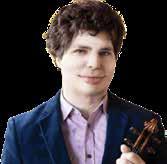
encoreatlanta.com | 41 SUXIAO LANG
Concerts of Thursday, April 20, 2023
8:00 PM
Friday, April 21, 2023
8:00 PM
NATHALIE STUTZMANN, conductor
DANIEL LOZAKOVICH, violin
WOLFGANG AMADEUS MOZART (1756–1791)
Overture to Die Zauberflöte (The Magic Flute),
K. 620 (1791) 7 MINS
FELIX MENDELSSOHN (1809–1847)
Violin Concerto in E Minor, Op. 64 (1845) 28 MINS
I. Allegro molto appassionato
II. Andante
III. Allegretto non troppo — Allegro molto vivace
Daniel Lozakovich, violin
INTERMISSION 20 MINS
LUDWIG VAN BEETHOVEN (1770–1827)
Symphony No. 6 in F Major, Op. 68 “Pastorale” (1808) 43 MINS
I. Awakening of cheerful feelings upon arriving in the country. Allegro non troppo
Presented with support from
Thursday's concert is dedicated to THE SLUMGULLION CHARITABLE FUND in honor of its extraordinary support of the 2021/22 Annual Fund.
II. Scene by the brook. Andante molto moto
III. Merry gathering of country-folk. Allegro
IV. Thunderstorm. Tempest. Allegro
V. Shepherd’s song. Happy, thankful feelings after the storm. Allegretto
The use of cameras or recording devices during the concert is strictly prohibited. Please be kind to those around you and silence your mobile phone and other hand-held devices.
42 | apr20/21 aso.org | @AtlantaSymphony | facebook.com/AtlantaSymphony
Overture to Die Zauberflöte
This overture is scored for two flutes, two oboes, two clarinets, two bassoons, two horns, two trumpets, three trombones, timpani and strings.
by Noel Morris Program Annotator
First ASO performance:
February 3, 1951
Henry Sopkin, conductor
Most recent ASO performances:
In The Magic Flute, secret societies meet the fairytale. And at least some part of it reflects Mozart’s life experience. He was admitted to a Masonic Lodge on December 14, 1784, and quickly rose to the rank of Master Mason. He cheerfully provided music for various occasions, including an opera on a libretto by his Masonic brother Emanuel Schikaneder.
May 30–June 2, 2013
Robert Spano, conductor
Schikaneder was a bigger-than-life figure—a composer, singer, Shakespearean actor, and author of dozens of plays and librettos. In 1791, he was running a theater at a real estate development in the suburb of Wieden (now a hip neighborhood in the heart of Vienna), where he delighted onlookers with stagecraft built around trapdoors and flying machines. The Magic Flute was part of a series of fairytale singspiels (German operas with spoken dialogue), which drew a mixed audience of working people and members of the nobility.
Following The Magic Flute through its plot twists becomes a slippery proposition for scholars because, on the one hand, it’s a fanciful fairytale. On the other hand, it’s filled with Masonic imagery—there are many allusions to things understood only by members of that secret society. Fans have identified the Freemason’s secret knock embedded in Mozart’s score. Groupings of three, popular in the Masonic realm, are echoed throughout—three opening chords, three ladies, three child spirits, three temples, three virtues (Nature, Reason and Wisdom); three flats in the key of E-flat major. Other masonic themes include Egyptian lore, the padlock, the serpent, the ordeal and silence.
The characters offer a cross-section of society, and Mozart represents them accordingly. Music for the lowborn bird-catcher, Papageno, is folk-like; music for the prince is noble. For Sarastro, the high priest, it’s churchy. Princess Pamina adds pathos, courage, faith, and reconciliation.
Mozart wrote a mind-boggling amount of music in 1791. Between April and September, he composed and premiered two operas, La clemenza di Tito, for the emperor’s coronation in Prague and The Magic Flute He wrote the overture to The Magic Flute after returning from Prague in September. An instant success, the opera opened on September 30 and ran for more than 100 performances. Schikaneder debuted the
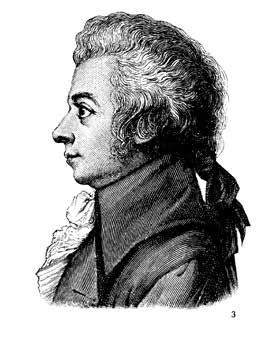
43 notesontheprogram |
role of Papageno. Mozart, sadly, was out of time. After conducting the first performances, he started writing a Mass for the Dead and died on December 5, leaving it unfinished.
First ASO performance: Feb 27, 1949
Henry Sopkin, conductor
James de la Fuente, violin
Most recent ASO performances:
March 7–10, 2013
Roberto Abbado, conductor
David Coucheron, violin
Violin Concerto in E Minor, Op. 64
In addition to the solo violin, this concerto is scored for two flutes, two oboes, two clarinets, two bassoons, two horns, two trumpets, timpani and strings.
By a strange coincidence, the story of the Mendelssohn Violin Concerto began in a townhouse on Michaelisstrasse in Hamburg. The composer was born there in 1809; a year later, Ferdinand David, the original violinist, was born in the very same house. But the Mendelssohns didn’t stay long. One night in 1811, during the tumult of the Napoleonic wars, Abraham Mendelssohn pulled his family from their beds and fled to Berlin.
Felix Mendelssohn was a man with more than one brilliant career. He wrote his first masterpiece at 16. He founded the Leipzig Conservatory and was a major conductor. He’d had a charmed upbringing. His father, Abraham, became a prominent banker. His mother championed the arts and brought a steady stream of famous people to the family home. Not only was young Felix a celebrated child prodigy (along with his sister), he excelled at sports, writing poetry, painting, and foreign languages.
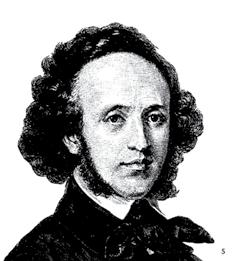
Ferdinand David also proved to be a gifted child. At 13, he went to live in Kassel to study with the prominent violinist Louis Spohr. At 15, he and his pianist-sister went on tour. Along the way, they stopped in Berlin, where they reconnected with the Mendelssohn family, and the two boys became fast friends.
At that time, Mendelssohn’s violin teacher wrote Johann Wolfgang von Goethe about his impressions of the boy composer: “My Felix has entered upon his fifteenth year. He grows under my very eyes. His wonderful pianoforte playing I may consider as quite exceptional. He might also become a great violin player.”
As youths, David and Mendelssohn whiled away the hours playing music together. In 1829, the violinist moved to Estonia. Mendelssohn went to University. At age 21, he was offered the chairmanship of the music department (he declined). By that time, he was composing some of his most famous works.
When 26-year-old Mendelssohn took the reins of the Gewandhaus
| encore 44 aso.org | @AtlantaSymphony | facebook.com/AtlantaSymphony
Orchestra in Leipzig, he hired his old friend as his concertmaster. In July of 1838, he wrote to him, “I should also like to compose for you a violin concerto for the winter; one in E minor sticks in my head, the beginning of it leaves me no peace.”
Soon, Mendelssohn began to buckle under the strain of his hectic existence. Work on the concerto went slowly. Although he could play the violin, he often conferred with his friend on technical matters. (In fact, David is credited with having written the first-movement cadenza.) Mendelssohn completed the piece in 1845 but was too frail to conduct its premiere. David played the first performance in Leipzig with Niels Gade on the podium.
Symphony No. 6 in F Major, Op. 68 “Pastorale”
Symphony No. 6 is scored for piccolo, two flutes, two oboes, two clarinets, two bassoons, two horns, two trumpets, two trombones, timpani, and strings.
First ASO performance: December 7, 1950
Henry Sopkin, conductor
Most recent
ASO performances: May 30–June 2, 2019
Charles Neate, a founder of London’s Philharmonic Society, spent considerable time with Ludwig van Beethoven in Vienna in 1815. Neate remarked that he had “never met anyone who so delighted in Nature, or so thoroughly enjoyed flowers or clouds or other natural objects. Nature was almost meat and drink to him; he seemed positively to exist upon it.”
Donald Runnicles, conductor
One of Beethoven’s favorite sayings was: “The morning air has gold to spare.” Beethoven often received musical inspiration during his long walks in the countryside. Regardless of the weather, Beethoven rose early each morning and, with music sketchbook in hand, spent several hours outdoors. Beethoven composed his Sixth Symphony during a period that spanned the summers of 1807 and 1808. The work Beethoven subtitled “Pastorale Symphony, or a recollection of country life,” is a symphonic ode to the wonders of the outdoors. By this stage of his life, Beethoven was increasingly unable to enjoy the sounds of nature he so touchingly and vividly portrays in the “Pastorale.” The continued decline of his hearing prompted this revelation in the October 1802 letter to his brothers, known as the Heiligenstadt Testament: But how humiliated I have felt if somebody standing beside me heard the sound of a flute in the distance and I heard nothing, or if somebody heard a shepherd sing and again I heard nothing— Such experiences almost made me despair, and I was on the point of putting an end to my life—The only thing that held me back was my art. For indeed it seemed to me impossible to leave this world before I had produced all the works I felt the urge to
encoreatlanta.com | 45
compose; and thus I have dragged on this miserable existence—a truly miserable existence....
But there is no sense of despair in Beethoven’s “Pastorale,” the most lyrical of his Nine Symphonies. There are several other factors that set the “Pastorale” Symphony apart from the other eight. It is the only Beethoven Symphony cast in five movements, as opposed to the traditional four. And while several of Beethoven’s Symphonies (notably the Third, Fifth and Ninth) have extramusical associations, the “Pastorale” is by far the most overtly programmatic.

Beethoven himself cautioned listeners that the “Pastorale” Symphony was “More an expression of feeling than a painting.” In his sketchbooks, Beethoven observed: “All painting in instrumental music, if pushed too far, is a failure.” And to be sure, Beethoven’s vivid depictions of a murmuring brook, birdcalls, peasant dances, a violent thunderstorm, and a shepherd’s piping are but part of a moving and dramatic symphonic experience.
The “Pastorale” Symphony is in five movements, each with a descriptive title. The first, “Awakening of cheerful feelings upon arriving in the country” (Allegro non troppo) opens with the first violins’ presentation of a cheerful melody that forms the basis for virtually the entire movement. Beethoven’s genius in thematic manipulation is perhaps never more apparent than in the development section, based in great part only upon a descending phrase derived from the second measure of the opening theme. The slow-tempo second movement, “Scene by the brook” (Andante con moto) is Beethoven’s magical evocation of the flowing waters, as well as the songs of the nearby birds. The final three movements are played without pause. The “Merry gathering of country-folk” (Allegro) yields to a fierce “Thunderstorm and Tempest” (Allegro). After the storm abates, the finale opens with a brief passage for the clarinets and horns suggesting a ranz des vaches, the traditional herdsman’s call. Out of this passage emerges the principal melody, initially played by the first violins (“Shepherd’s song. Happy, thankful feelings after the storm”). The final measures feature a brief (muted) horn reprise of the ranz des vaches, capped by two fortissimo orchestral chords.
–Notes on Symphony No. 6 by Ken Meltzer
| encore 46 aso.org | @AtlantaSymphony | facebook.com/AtlantaSymphony
JOSEPH WILLIBRORD MÄHLER

DANIEL LOZAKOVICH, VIOLIN
Violinist Daniel Lozakovich was born in Stockholm in 2001 and began playing the violin when he was almost seven. He made his solo debut two years later with the Moscow Virtuosi Chamber Orchestra and Vladimir Spivakov in Moscow. Since the first performance Daniel has a major influence by Vladimir Spivakov and collaborates with some of the world’s eminent conductors, including Ádám Fischer, Semyon Bychkov, Neeme Järvi, Esa Pekka Salonen, Nathalie Stutzmann, Leonard Slatkin and Lorenzo Viotti, among others.

He performs with such orchestras as the Boston Symphony Orchestra, the Orchestre National de France, Orchestre National du Capitole de Toulouse, the Orchestre Philharmonique de Radio France, the Royal Stockholm Philharmonic, Royal Liverpool Philharmonic, the Konzerthausorchester Berlin and many more.

Lozakovich studies at the Karlsruhe University of Music with Professor Josef Rissin since 2012, and from 2015 has been mentored by Eduard Wulfson in Geneva, and has also studied with Mikhail Kazinik, Natalja Beshulya and Gerhard Schulz.
He plays the “ex-Baron Rothschild” Stradivari on generous loan on behalf of the owner by Reuning & Son, Boston, and Eduard Wulfson, and the Stradivarius “Le Reynier” (1727), generously loaned by LVMH.
48 | meet
theartists

Concerts of Thursday, April 27, 2023
8:00 PM
Saturday, April 29, 2023
8:00 PM
NICHOLAS CARTER, conductor
NICOLE CABELL, soprano
LUCAS MEACHEM, baritone
THE ATLANTA SYMPHONY ORCHESTRA CHORUS
Norman Mackenzie, Director of Choruses
LERA AUERBACH (b. 1973)
Icarus (2006, revised 2011)
RICHARD WAGNER (1813–1883)
“Dawn and Siegfried’s Rhine Journey” from Götterdämmerung (1876)
INTERMISSION
RALPH VAUGHAN WILLIAMS (1872–1958)
12 MINS
The use of cameras or recording devices during the concert is strictly prohibited. Please be kind to those around you and silence your mobile phone and other hand-held devices.
13 MINS
20 MINS
A Sea Symphony (Symphony No. 1) (1909) 63 MINS
I. A Song for All Seas, All Ships
II. On the Beach at Night Alone
III. Scherzo: The Waves
IV. The Explorers
Nicole Cabell, soprano
Lucas Meachem, baritone
The Atlanta Symphony Orchestra Chorus
50 | apr27/29 aso.org | @AtlantaSymphony | facebook.com/AtlantaSymphony
by Noel Morris Program Annotator
Icarus
Icarus is scored for three flutes (one doubling piccolo and one doubling alto flute), two oboes, English horn, two clarinets, bass clarinet, two bassoons, contrabassoon, four horns, three trumpets, three trombones, tuba, timpani, percussion, two harps, piano, celeste, theremin and strings.
These are the first ASO performances.
Arenaissance artist for modern times, Lera Auerbach is a widely recognized conductor, pianist, and composer. She is also an award-winning poet and an exhibited visual artist. All of her work is interconnected as part of a cohesive and comprehensive artistic worldview.

Auerbach’s exquisitely crafted, emotional, and boldly imaginative music reached to global audiences. Orchestral collaborations include the New York Philharmonic, Philadelphia Orchestra, National Symphony, Oslo Philharmonic, Munich’s Bayerisches Staatsorchester, Staatskapelle Dresden, and Vienna’s ORF RadioSymphonieorchester, among many others. Auerbach’s works for orchestra are performed by the world’s leading conductors, including Christoph Eschenbach, Alan Gilbert, Vladimir Fedoseyev, Neeme Järvi, Vladimir Jurowski, Charles Dutoit, Andris Nelsons, Osmo Vänskä, Hannu Lintu, and Marin Alsop, to mention only a few.
Lera Auerbach holds multiple degrees from the Juilliard School in New York and the Hannover University of Music, Drama, and Media in Germany. Her teachers include Milton Babbitt, Rosalyn Tureck, Joseph Kalichstein, and Einar Steen-Nøkleberg. The World Economic Forum in Davos, Switzerland, selected her in 2007 as a Young Global Leader, and since 2014, she has served as a Cultural Leader. Boosey and Hawkes / Sikorski publish her music, and recordings are available on ECM, Deutsche Grammophon, Nonesuch, Alpha Classics, BIS, Cedille, and many other labels.
From the composer: Light blinds.
To see—we turn away. Our eyes hold all images inverted. Every day a new Icarus kills himself.
I have been fascinated by the myth of Icarus. As a child, I lived in ancient Greece. The book of myths was my favorite and the world of jealous gods and god-like humans was more real to me than the world outside of my windows, full of bloody red flags (the red of the Soviet flag symbolized the blood of the heroes
51 notesontheprogram |
RAFAEL DESTELLA
of the Revolution) and the Soviet-trinity portraits of Lenin-MarxEngels with the occasional bushy eyebrows of Brezhnev looking at me from the walls of the buildings. In some ways the two worlds blurred. The world outside made much more sense through the perspective of the ancient Greek myths, where it was quite common for a power-protective god to devour all his children.
Icarus was one of my heroes (or antiheroes, depending on the interpretation)—the winged boy who dared to fly too close to the sun. The wings were made by his father, Daedalus, a skilled craftsman, who earlier in his life designed the famous labyrinth in Crete that held the Minotaur. Daedalus was held prisoner in Crete and the wings were his only way to escape.
Daedalus warned Icarus not to fly too close to the sun or too close to the ocean, but what teenager listens to his father? Exhilarated by freedom, by his own youth, by the feeling of light, Icarus soared higher and higher until the wax on his wings melted and he fell into the ocean. Oh, gravity! Sometimes I think it is the law of gravity that truly defines our existence.
What makes this myth so touching is Icarus’s impatience of the heart, his wish to reach the unreachable, the intensity of the ecstatic brevity of his flight and inevitability of his fall. If Icarus were to fly safely—there would be no myth. His tragic death is beautiful. It also poses a question—from Daedalus’ point of view—how can one distinguish success from failure? His greatest invention, the wings which allowed a man to fly, was also his greatest failure as they caused the death of his son. Daedalus was brilliant, his wings were perfect, but he was also a blind father who did not truly understand his child. If he did, he would realize that the road to freedom leads to its ultimate form—death, which Icarus, with the uncompromising daring of youth, achieves. The desire for freedom, taken to its extreme, receives its absolute form—a closed circle in which success means failure and freedom means death.
The desire to go beyond the boundaries into the ecstatic visionary realm of soaring flight is essentially human. In some ways this desire to transcend the everyday-ness is what it means to be human. That is why this myth has resonated for centuries. Icarus knows the danger of flying too high, but the risk is justified in his eyes. He needs to fly as high as he can, beyond what is possible—it is his nature.
52 | encore aso.org | @AtlantaSymphony | facebook.com/AtlantaSymphony
The title Icarus was given to this work after it was written. All my music is abstract, but by giving evocative titles I invite the listener to feel free to imagine, to access his own memories, associations. Icarus is what came to my mind, listening to this work at that time. Each time I hear the piece—it is different. What is important to me is that it connects to you, the listener, in the most individual and direct way, that this music disturbs you, moves you, soars with you, stays with you. You don’t need to understand how or why—just allow the music to take you wherever it takes you. It is permissible to daydream while listening or to remember your own past. It is fine not to have any images at all, but simply experience the sound. These program notes are a door to your imagination. The music is your guide. But it is up to you to take the step and cross the threshold.
“Dawn” and “Siegfried’s Rhine Journey” from Götterdämmerung
First ASO performances: November 3–4, 1971
Michael Palmer, conductor
Götterdämmerung is scored for piccolo, three flutes, three oboes, English horn, three clarinets, bass clarinet, three bassoons, eight horns (two Wagner tubas), three trumpets, bass trumpet, 3 trombones, bass trombone, tuba, timpani, percussion, four harps and strings. “Dawn” and “Siegfried’s Rhine Journey” offer a bite-size sample of Wagner’s 15-hour epic, The Ring of the Nibelung.
Most recent ASO performances: January 19–21, 2006
Donald Runnicles, conductor
“So what is the Ring?” asks the Metropolitan Opera’s Will Berger, with his tongue lodged in his cheek. “In one sentence,” he wrote, “it is a German Romantic view of Norse and Teutonic myth influenced by Greek tragedy and a Buddhistic sense of destiny told with a sociopolitical deconstruction of contemporary society, a psychological study of motivation and action, and a blueprint for a new approach to music and theater.”
Thankfully, Berger included a quote from George Bernard Shaw, who encouraged “modest citizens” to take the plunge and see The Ring. “Not a note of it,” he wrote, “has any other point than . . . giving musical expression to the drama.” And that Wagner does brilliantly. Think of John Williams’ Jaws theme or the blaring trombones that follow Darth Vader across the galaxy. This is the essence of Wagner’s Ring. It is a fantasy world on the level of Star Wars. And like those films, the tunes and the lore live in our hearts and our imaginations—even if we wince at some of its cheesiness. Yes, Wagner’s Ring is flawed. But what a masterpiece of entertainment it is.
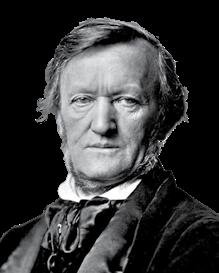
encoreatlanta.com | 53
WIKIMEDIA
Richard Wagner spent 26 years (1848–1874) of his life crafting this mythical world, writing his own librettos and all this marvelous music. Curiously, it all started with a fantasy about a funeral, one that honors a great hero. The rest of The Ring serves as its backstory.
The hero’s name is Siegfried, and we meet him in the third of the four operas. He is a wildling, a man raised in the wilderness by a malevolent mythical creature named Mime. Without any human contact, Siegfried grows into a naïve and thick-headed youth who’s also the world’s most powerful warrior. Battling bears and a dragon, he wins the gold (including the ring).
Siegfried realizes he’s never known fear until he first encounters Woman, which happens at the end of the third opera. By the start of the fourth, Götterdämmerung (Twilight of the Gods), Siegfried and Brünnhilde are lovers. She has imparted him with wisdom and knowledge. Now that he is a changed man, he heads out into the world to do heroic deeds. His day begins with the instrumental music “Dawn” and follows into “Siegfried’s Rhine Journey.”
As the hero sets out, the horns sound Siegfried’s theme, or “leitmotif,” followed by the clarinets who sound Brünnhilde’s theme. The strings pick up her music, sending Siegfried on his way. The orchestra builds into a climax with the Rhine motive—this is glorious, major-key music. And then, at the very end, the Ring motive sounds, adding a hint of foreboding. The ring is cursed. Its music foreshadows the funeral to come.
First ASO performances:
November 8–10, 2001
Robert Spano, conductor
Most recent ASO performances:
November 3–5, 2016
Robert Spano, conductor
A Sea Symphony (Symphony No. 1)
A Sea Symphony is scored for is scored for soprano and baritone solo, mixed chorus, three flutes (one doubling piccolo), two oboes, English horn, E-flat clarinet, two clarinets, bass clarinet, two bassoons, contrabassoon, four horns, three trumpets, three trombones, tuba, timpani, percussion, organ, two harps and strings.
The town of Lichfield in Staffordshire sports a plaque boasting its status as England’s farthest point from the sea—at just 84 miles.
Derbyshire’s Coton in Elms makes a rival claim at 70 miles from the sea, specifying that it is the farthest point from coastal waters (tidal waters come much closer to Lichfield via the River Trent).
As an island nation, the watery expanse permeates the English identity. The earliest extant ocean-going ships date from the Bronze Age (around 1600 BC). The sea brought the Romans in 43 AD, the Normans in 1066, and Viking incursions through the Middle Ages.
54 | encore aso.org | @AtlantaSymphony | facebook.com/AtlantaSymphony
Then came the rise of the British Empire, thanks to the might of the Royal Navy, which was established almost 500 years ago. Behind all these milestones are countless souls who sailed those ships, either by choice or by conscription, venturing into the great unknown. A few found glory and riches. Many more found a watery grave, leaving holes in the hearts of those left behind.
Ralph Vaughan Williams studied at the Royal College of Music and at Trinity College, Cambridge, and wasn’t exactly in a hurry to finish. In 1901, he was nearly 30 when he earned a doctorate and published his first song. That’s not to say those years weren’t formative. He soon developed an interest in English folk song and started traveling the countryside to meet folk musicians and catalog their tunes. (He was one of the original ethnomusicologists.) And the earthy, modal sounds associated with English folk song soon inhabited his own works, giving him a distinctly English voice.

In 1903, Vaughan Williams began to write original music on verses by the American poet Walt Whitman, which would eventually become A Sea Symphony. At the same time, he leaped into a project to edit and standardize the English hymnal—a huge undertaking by a composer who had yet to issue a major work of his own. Now in his mid-thirties, he journeyed to the continent to take lessons from Max Bruch and Maurice Ravel. In 1909, after a gestation of nearly six years, he issued his first symphony. And it is a whopper.
A Sea Symphony is a massive choral work, with over an hour’s worth of music based on poems from Whitman’s “Leaves of Grass”. The first—and longest—of his nine symphonies, A Sea Symphony debuted at the Leeds Festival on the composer’s 38th birthday. With that, Vaughan Williams secured his position as one of Britain’s most important musical figures.
Walt Whitman
Native New Yorker Walt Whitman (1819-1892) has been the muse of a surprising number of composers, including Kurt Weill, Leonard Bernstein, Marc Blitzstein and Bernard Hermann. Across the Atlantic, he inspired works from Gustav Holst, Frederick Delius, Benjamin Britten and many more.
Curiously, the energy goes two ways: Whitman was nearing his 30th birthday when he caught the opera bug. He fell hard for the pyrotechnic virtuosity of Donizetti, Rossini, and Bellini operas and idolized the great Italian contralto Marietta Alboni. He credited opera as an influence on his landmark poetry collection, “Leaves of Grass.”
encoreatlanta.com | 55
WILLIAM ROTHENSTEIN
When Whitman first published “Leaves of Grass” in 1855, he included 12 poems. By the end of his life, the collection had grown to more than 400, including searing reflections on the American Civil War. By the time Ralph Vaughan Williams was at Cambridge, the poems were popular currency among the students and faculty. Today’s composers continue to mine this literary treasury, including John Adams, Jennifer Higdon and Matthew Aucoin.
VAUGHAN WILLIAMS: A Sea Symphony
“Song of the Exposition” and “Song for all Seas, all Ships"
Behold, the sea itself, And on its limitless, heaving breast, the ships; See, where their white sails, bellying in the wind, speckle the green and blue, See, the steamers coming and going, steaming in or out of port, See, dusky and undulating, the long pennants of smoke.
1 To-day a rude brief recitative, Of ships sailing the seas, each with its special flag or ship-signal, Of unnamed heroes in the ships—of waves spreading and spreading far as the eye can reach, Of dashing spray, and the winds piping and blowing, And out of these a chant for the sailors of all nations, Fitful, like a surge.
Of sea-captains young or old, and the mates, and of all intrepid sailors, Of the few, very choice, taciturn, whom fate can never surprise nor death dismay. Pick'd sparingly without noise by thee old ocean, chosen by thee, Thou sea that pickest and cullest the race in time, and unitest nations, Suckled by thee, old husky nurse, embodying thee, Indomitable, untamed as thee. ...
2 Flaunt out O sea your separate flags of nations! Flaunt out visible as ever the various ship-signals! But do you reserve especially for yourself and for the soul of man one flag above all the rest, A spiritual woven signal for all nations, emblem of man elate above death, Token of all brave captains and all intrepid sailors and mates, And all that went down doing their duty, Reminiscent of them, twined from all intrepid captains young or old, A pennant universal, subtly waving all time, o'er all brave sailors, All seas, all ships.
"On the Beach at Night Alone"
On the beach at night alone,
As the old mother sways her to and fro singing her husky song, As I watch the bright stars shining, I think a thought of the clef of the universes and of the future.
| encore 56
aso.org | @AtlantaSymphony | facebook.com/AtlantaSymphony
A vast similitude interlocks all, ...
All distances of place however wide, All distances of time, ...
All souls, all living bodies though they be ever so different, ... All nations, ...
All identities that have existed or may exist ..., All lives and deaths, all of the past, present, future, This vast similitude spans them, and always has spann'd, And shall forever span them and compactly hold and enclose them.
"After the Sea-ship"
After the sea-ship, after the whistling winds, After the white-gray sails taut to their spars and ropes, Below, a myriad myriad waves hastening, lifting up their necks, Tending in ceaseless flow toward the track of the ship, Waves of the ocean bubbling and gurgling, blithely prying, Waves, undulating waves, liquid, uneven, emulous waves, Toward that whirling current, laughing and buoyant, with curves, Where the great vessel sailing and tacking displaced the surface, Larger and smaller waves in the spread of the ocean yearnfully flowing, The wake of the sea-ship after she passes, flashing and frolicsome under the sun, A motley procession with many a fleck of foam and many fragments, Following the stately and rapid ship, in the wake following.
"Passage to India"
5 O vast Rondure, swimming in space, Cover'd all over with visible power and beauty, Alternate light and day and the teeming spiritual darkness, Unspeakable high processions of sun and moon and countless stars above, Below, the manifold grass and waters, animals, mountains, trees, With inscrutable purpose, some hidden prophetic intention, Now first it seems my thought begins to span thee.
Down from the gardens of Asia descending ..., Adam and Eve appear, then their myriad progeny after them, Wandering, yearning, ..., with restless explorations, With questionings, baffled, formless, feverish, with never-happy hearts, With that sad incessant refrain, Wherefore unsatisfied soul? ... Whither O mocking life?
Ah who shall soothe these feverish children?
Who Justify these restless explorations? Who speak the secret of impassive earth? ...
Yet soul be sure the first intent remains, and shall be carried out, Perhaps even now the time has arrived.
encoreatlanta.com | 57
After the seas are all crossed, (...) After the great captains and engineers have accomplished their work, After the noble inventors, ... Finally shall come the poet worthy that name, The true son of God shall come singing his songs.
8 O we can wait no longer, We too take ship O soul, Joyous we too launch out on trackless seas, Fearless for unknown shores on waves of ecstasy to sail, Amid the wafting winds, (thou pressing me to thee, I thee to me, O soul,) Caroling free, singing our song of God, Chanting our chant of pleasant exploration.
O soul thou pleasest me, I thee, Sailing these seas or on the hills, or waking in the night, Thoughts, silent thoughts, of Time and Space and Death, like waters flowing, Bear me indeed as through the regions infinite, Whose air I breathe, whose ripples hear, lave me all over, Bathe me O God in thee, mounting to thee, I and my soul to range in range of thee.
O Thou transcendent, Nameless, the fibre and the breath, Light of the light, shedding forth universes, thou centre of them, ... Swiftly I shrivel at the thought of God, At Nature and its wonders, Time and Space and Death, But that I, turning, call to thee O soul, thou actual Me, And lo, thou gently masterest the orbs, Thou matest Time, smilest content at Death, And fillest, swellest full the vastnesses of Space. Greater than stars or suns, Bounding O soul thou journeyest forth; ...
9 Away O soul! hoist instantly the anchor! Cut the hawsers—haul out—shake out every sail! ... Sail forth—steer for the deep waters only, Reckless O soul, exploring, I with thee, and thou with me, For we are bound where mariner has not yet dared to go, ...
O my brave soul!
O farther farther sail!
O daring joy, but safe! are they not all the seas of God?
O farther, farther, farther sail!
| encore 58
aso.org | @AtlantaSymphony | facebook.com/AtlantaSymphony

NICHOLAS CARTER, CONDUCTOR
The 2022/23 seasons marks Nicholas Carter’s second as Chief Conductor and Co-Operndirektor of Oper Bern. This season he leads main stage productions of Die Walkure, L’enfant et les , and Iolanta and appears in the Berner Symphonieorchester subscription season. This season will see debut appearances for Nicholas with Opernhaus Zurich (Pearl Fishers), Atlanta Symphony Orchestra and Dresden Semperoper (Die Zauberflöte).
From 2018-2021, Nicholas was Chefdirigent of Stadttheater Klagenfurt and the Kärntnersinfonieorchester, where he led many new productions and appeared regularly in the orchestra’s concert series. His repertoire there included widely celebrated productions of Tannhäuser, Pelleas et Melisande, Simon Boccanegra, Rusalka, Elektra, Cendrillon and La Clemenza di Tito. For his Santa Fe Opera debut, he conducted Die Fledermaus, returning to much praise in 2021 for Eugene Onegin.

Born in Melbourne, Nicholas enjoys an ongoing relationship with all the major Australian orchestras, particularly with the Adelaide Symphony, where he served as Principal Conductor 2016-2019. After serving as Kapellmeister and musical assistant to Simone Young at the Staatsoper Hamburg, Nicholas was invited in 2014 to take up a Kapellmeister position at the Deutsche Oper Berlin where he worked closely with GMD Donald Runnicles.
NICOLE CABELL, SOPRANO

Nicole Cabell’s notable debuts have included her first staged Bess in James Robinson’s acclaimed production of Porgy and Bess for English National Opera, conducted by John Wilson; alongside appearances in full lyric roles, such as Violetta (La traviata) at the Royal Opera House, Covent Garden, and for her debut at Opéra national de Paris.
On the concert platform last season she joined the London Symphony Orchestra and Sir Simon Rattle for performances of George Walker’s Lilacs in London and Standford, California and subsequently performed the piece as part of BBC Proms 2022 with Chineke! Orchestra alongside Beethoven Symphony No. 9. In the US, in the current season she joins NDR Elbphilharmonie Orchester in Hamburg as Clara in concert performances of Porgy and Bess; Seattle Symphony for Handel’s Messiah; and Atlanta Symphony for Vaughan Williams’ Sea Symphony
60
| meettheartists
aso.org | @AtlantaSymphony | facebook.com/AtlantaSymphony
ANNETTE KOROLL DEVON CASS
Nicole Cabell was the winner of the 2005 BBC Singer of the World Competition. Her solo debut album, Soprano, was named ‘Editor’s Choice’ by Gramophone and received the 2007 Georg Solti Orphée d’Or from the French Académie du Disque Lyrique.
LUCAS MEACHEM, BARITONE
Grammy® Award-winning baritone Lucas Meachem, begins his 2022/23 season with performances as the title role in Don Giovanni at Ravinia Festival, Escamillo in Carmen with Canadian Opera Company and Opéra national de Paris, De Siriex in Fedora with The Metropolitan Opera, and Count Almaviva in Nozze di Figaro with Los Angeles Opera. Other highlights include guest soloist appearances with Atlanta Symphony Orchestra, Classical Tahoe, and San Francisco Opera.

Named the winner of San Francisco Opera’s inaugural “Emerging Star of the Year” Award in 2016, other notable performances include Il barbiere di Siviglia at Los Angeles Opera, where he also gave his Grammy® Award-winning performance of Figaro in The Ghosts of Versailles.
Meachem’s first solo album, Shall We Gather, was released in September 2021 under Rubicon Records and featuring his wife, Irina Meachem, at the piano.
Born in North Carolina, Lucas Meachem studied music at Appalachian State University, the Eastman School of Music, and Yale University before becoming an Adler Fellow with the San Francisco Opera.
NORMAN MACKENZIE, DIRECTOR OF CHORUSES
(SEE BIO PAGE 34)
encoreatlanta.com | 61
ATLANTA SYMPHONY ORCHESTRA CHORUS
SOPRANO 1
Khadijah Davis
Liz Dean*
Laura Foster
Michelle Griffin*
Erin Jones*
Arietha Lockhart**
Mindy Margolis*
Joneen Padgett*
Rachel Paul
Susan Ray
Samaria Rodriguez
Emily Salmond
Lydia Sharp
Susie Shepardson
Stacey Tanner
Chelsea Toledo
Brianne Turgeon**
Deanna Walton
Erika Wuerzner
Michelle Yancich
Wanda Yang Temko**
SOPRANO 2
Debbie Ashton
Sloan Atwood*
Jessica Barber
Tierney Breedlove
Barbara Brown
Maggie Carpenter
Martha Craft
Gina Deaton
Erika Elliott
Mary Goodwin
Amanda Hoffman
Melissa Mack
Heidi Padovano
Lindsay Patten Murray
Chantae Pittman
Tramaine Quarterman
Marianna Schuck
Paula Snelling**
Anne-Marie Spalinger*
Emily Tallant
Cheryl Thrash**
Donna Weeks**
ALTO 1
June Abbott**
Pamela Amy-Cupp
Deborah Boland**
Emily Campbell
Patricia DinkinsMatthews*
Beth Freeman*
Cynthia Harris
Unita Harris
Beverly Hueter*
Janet Johnson**
Susan Jones
Kathleen Kelly-
George*
Virginia Little*
Staria Lovelady*
Alina Luke
Frances McDowell-
Beadle**
Sara McKlin
Linda Morgan**
Natalie Pierce
Noelle Ross
Camilla Springfield**
Rachel Stewart**
Nancy York*
ALTO 2
Nancy Adams*
Ana Baida
Angelica Blackman-
Keim
Elizabeth Borland
Emily Boyer
Marcia Chandler*
Carol Comstock
Meaghan Curry
Cynthia Goeltz
DeBold**
Michèle Diament*
Alyssa Harris
Joia Johnson
Nicole Khoury*
Katherine MacKenzie
Lynda Martin
Lalla McGee
Sun Min
Laura Rappold*
Sharon Simons*
Virginia Thompson*
Cheryl Vanture
Kiki Wilson**
Diane Woodard**
TENOR 1
Jeffrey Baxter**
David Blalock**
LaRue Bowman
Jack Caldwell**
Daniel Cameron*
Daniel Compton
Justin Cornelius
Clifford Edge**
Steven Farrow**
Leif Gilbert-Hansen*
James Jarrell*
Keith Langston*
Christopher Patton*
Stephen Reed #
Mark Warden*
TENOR 2
Sutton Bacon
Matthew Borkowski
Steve Brailsford
Charles Cottingham #
Phillip Crumbly*
Steven Dykes
Sean Fletcher
John Harr
Keith Jeffords**
David Kinrade
Michael Parker
Timothy Parrott
Marshall Peterson*
Brent Runnels
Matthew Sellers
Thomas Slusher
Scott Stephens**
BASS 1
Dock Anderson
William Borland*
Russell Cason**
Jeremy Christensen
Joshua Clark
Trey Clegg*
Rick Cobb
Michael Cranford
Thomas Elston
Jon Gunnemann**
Jason Hamlet
Noah Horton
Nick Jones #
Frank Kingsley
Alp Koksal
Jameson Linville
Jackson McCarthy
John Newsome
Hal Richards
Peter Shirts
John Terry
BASS 2
Philip Barreca
Marcel Benoit
Jacob Blevins
John Carter
Joel Craft**
Timothy Gunter*
Thomas Hanrahan
David Hansen**
Philip Jones
Tamir Mickens
Michael Nedvidek
Joel Rose
John Ruff*
Jonathan Smith*
George Sustman
Benjamin Temko*
David Webster**
Gregory Whitmire**
Keith Wyatt*
* 20+ years of service
** 30+ years of service
# Charter member (1970)
| encore 62
Norman Mackenzie director of choruses
The Frannie & Bill Graves Chair
Jeffrey Baxter choral administrator The Florence Kopleff Chair
Peter Marshall accompanist
aso.org | @AtlantaSymphony | facebook.com/AtlantaSymphony




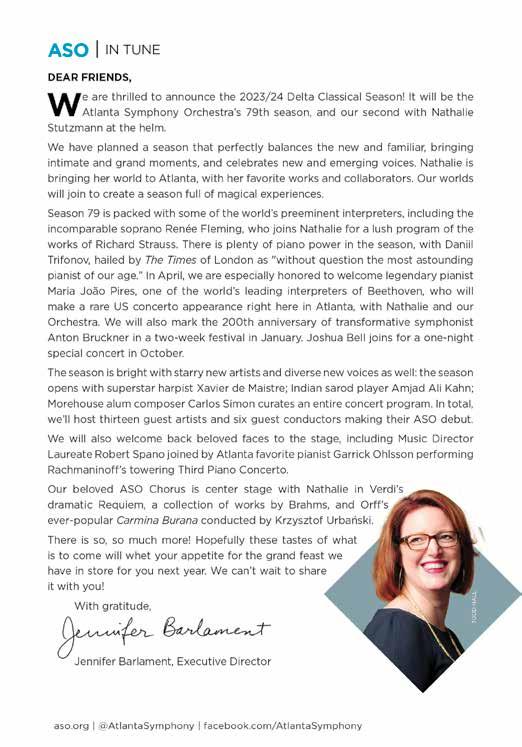














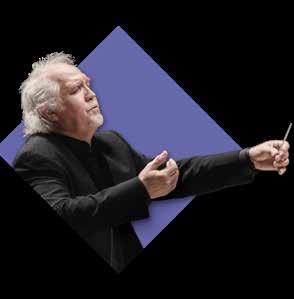








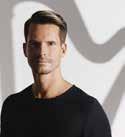


 AMAAN ALI BANGASH
JANAI BRUGGER
AMAAN ALI BANGASH
JANAI BRUGGER
